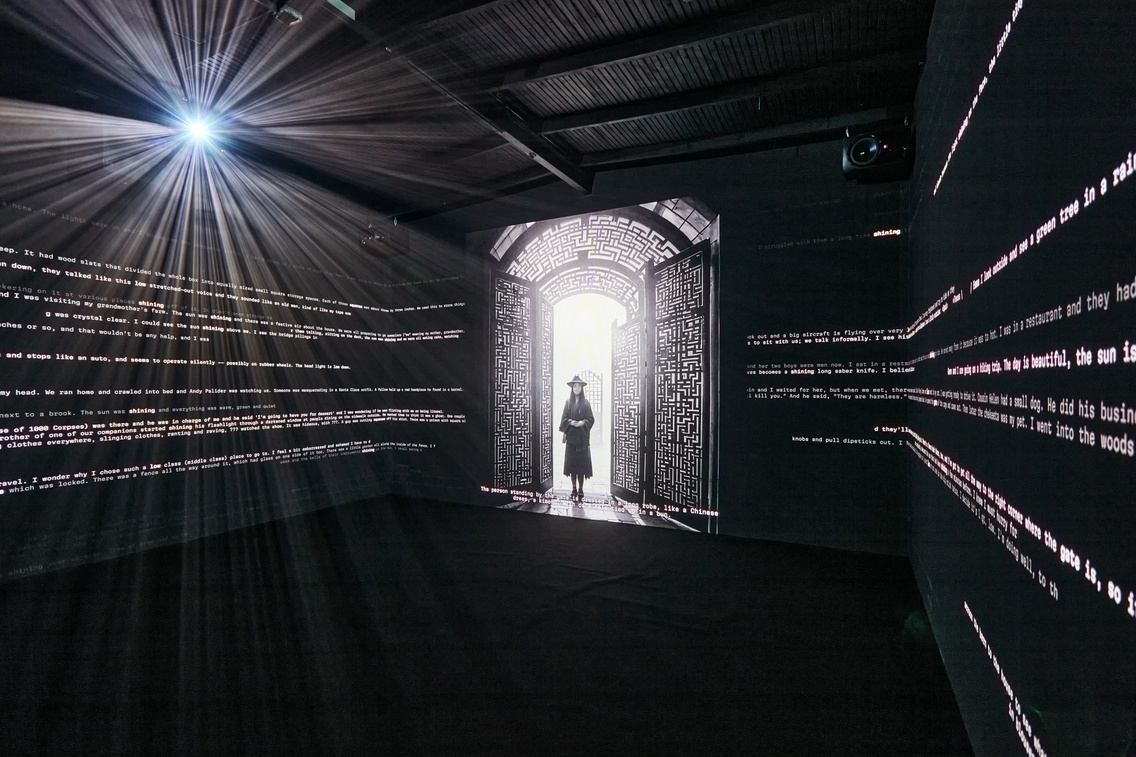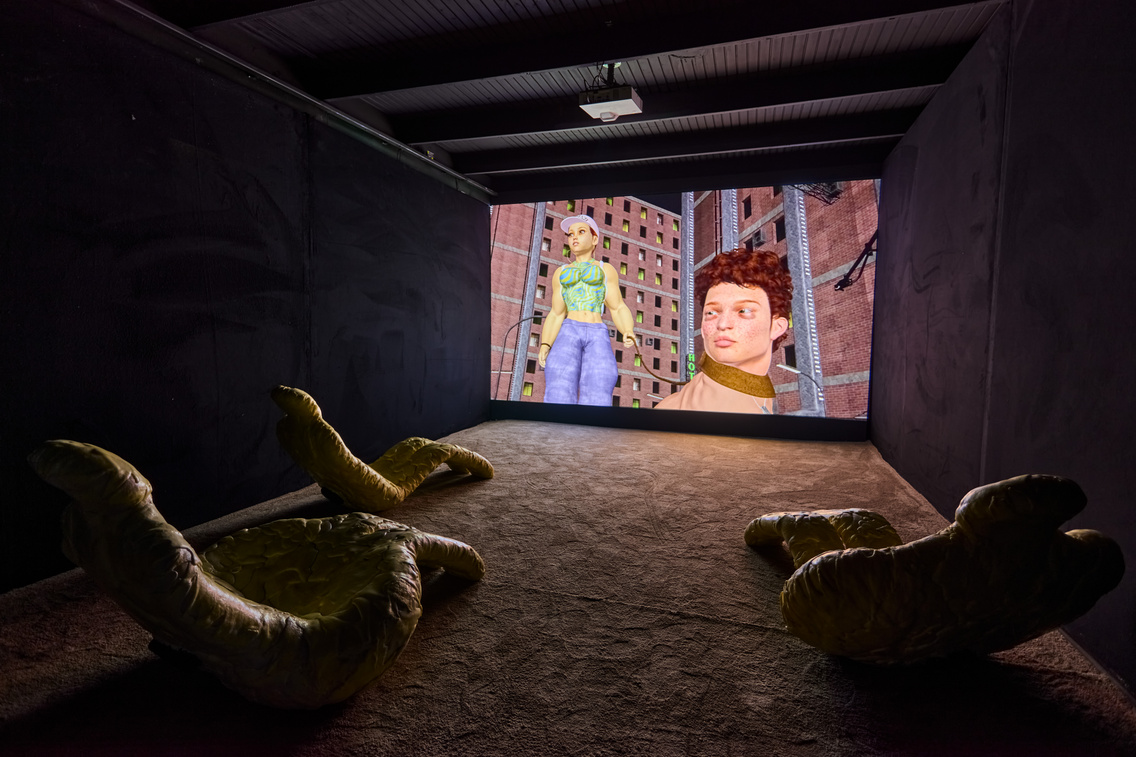Will our future dreams be influenced by images generated by artificial intelligence or even computer games? How about an installation showcasing every solar flare photographed since 1930? How do trees communicate with each other? What does it feel like when the space around you disappears? The Light Art Museum's newest exhibition, Phantom Vision, explores these questions and more, delving into the limits of our everyday perception through the work of over 35 international and Hungarian artists.
The installations on display raise a plethora of scientific and moral questions. They all share a common thread: they introduce us to a world that showcases the diversity of wave phenomena, from sound waves to electromagnetic and brain waves. Simultaneously, these installations transport us into the subliminal realms of dreams, hallucinations, and meditative trances, revealing the intricacies of perception.
The exhibition itself is a truly immersive experience, requiring a few minutes to fully immerse yourself and emerge in a completely different state of consciousness. You'll likely leave with unusual sensations and a multitude of questions.
PHANTOM VISION OFFERS A UNIQUE OPPORTUNITY TO EXPLORE THE INTERSECTION OF THE LATEST SCIENTIFIC DISCOVERIES AND THE POTENTIAL FOR INNER JOURNEYS. IT'S UP TO YOU TO DECIDE HOW DEEPLY YOU'LL ALLOW YOURSELF TO BE DRAWN INTO THIS EXTRAORDINARY EXPERIENCE.

The immeasurable, infinite space
The centre of the former marketplace is dominated by Kati Katona's recent work, Immensia 2024, a 40-meter-long, 2,000-square-meter projection created specifically for this exhibition. This cigar-shaped, inflatable 'sphere' resembles a Zeppelin airship. Access the interior through an airlock gate to discover a 360-degree space featuring mirrors. The projection is constantly changing, with lines and shapes merging and dissolving before your eyes, captivating your attention and evoking unique associations in each viewer. This brief journey is disorienting yet exhilarating, challenging your preconceptions of space and spatial perception. We've returned multiple times, drawn to the unparalleled nature of this experience.

From dreams to virtual reality and the climate crisis
Imagine gaining insights into the dreams of others through projected images. What if thousands of dreams were stitched together and visualized? FUSE's Onirica (), a 1.5-hour animation, answers these questions by using artificial intelligence to weave nearly 30,000 dreams into a cohesive narrative. Months of work went into transforming these dreams into images with the aid of AI. Interestingly, these dreams originated in the pre-digital era, the 70s and 80s, ensuring they remain uninfluenced by digital content, yet we can observe the AI's interpretation of human creations.

Jon Rafman's Dream Journal, also 1.5 hours long, presents a contrasting vision of dreams. This animated film projects a gamer's dream world, referencing the animated game Second Life. These dreams offer a visually and thematically distinct perspective from the Onirica story stream.
THE VISUAL WORLD AND CONTENT WE ENCOUNTER IN THESE WORKS ARE VISUALLY AND EMOTIONALLY STRIKING, ESPECIALLY AS WE SETTLE INTO THE COMFORTABLE QUILTED CARPET AND ARMCHAIRS.
The video installation Dream Journal 2016-2019, created by an artist who self-diagnoses as an internet addict, is based on daily animations of his own dreams using 3D software. Expert gamers will undoubtedly recognise characters they might encounter in virtual games within the fragmented plot of the video. However, the video also features epic gaming elements and the repressed fantasies of an internet addict. While you might find the initial minutes amusing, with a plethora of unique creatures and characters lined up before your eyes, you're sure to find a smile on your face. Although we're discussing dreams, it's both shocking and terrifying to witness the distortions caused by virtual games and to see a man addicted to games so honestly revealing the deepest and darkest layers of his psyche. Admission to this room is restricted to individuals aged 18 and over and requires using the code on your ticket.

Installations introduce new themes and trends focusing on the climate crisis and natural communication. Miklós Onucsán's work, I re-place the horizontal of the water, captures a single moment in the present while simultaneously looking to the past and future. Initially, we only see the water gauges on the cracked surface of the dried riverbed. Their placement may seem random, but upon closer inspection, each gauge contains a small air bubble, indicating a level surface. Entering this installation is a suffocating experience, a sense of increasing absence, particularly the absence of water and the irreversible nature of the situation.
A SINGLE MOMENT OR THOUGHT, YET SO MANY QUESTIONS, CHARACTERISES ALL THE WORKS IN THIS EXHIBITION.

Bigert & Bergström's work is not what it initially appears to be. It resembles a purely green energy device that mimics the sounds of rain, wind, and lightning. While it may look like a perpetual motion machine, it actually consumes ten times more energy than the motors powering it. This raises the question: Is what we perceive as green truly green? The work is both ironic and self-deprecating, encouraging us to challenge our existing schemas and reconsider our perspectives on certain issues.

From the most advanced technologies to the simplest tools
It was fascinating to experience these installations together in a joint exhibition, yet within separate, intimate spaces. The range of technical and visual realisations in these works is impressive, but even the simplest thematic material and tools can be as striking as the thousands of different visions and emotions they evoke.

In Yashuhiro Chida's minimalist 0.04, he focuses on the darkness between moments of light. On the exhibition space's ceiling hangs a tiny water droplet that slowly swells until it reaches 0.04 millilitres, then suddenly falls. As the falling water droplet passes through a point of light, it becomes a lens and prism, scattering light throughout the space. This space is impossible to ignore; it simply draws you in, providing a sense of the here and now that is often elusive in daily life.
IT CAN TRIGGER NUMEROUS INTERPRETATIONS AND SYNCHRONISE WITH YOUR BREATHING RHYTHM.
The Japanese artist's Analemma creates an ever-changing environment where millions of tiny stripes and points of light fill the space, allowing for a different perception of three-dimensional space. Just four projectors and several kilometres of polyester thread create these complex phenomena. Although light always travels at the same speed, we perceive the points of light as moving around us at varying speeds, resembling neutrons in nerve fibres or glowing fireflies dancing before our eyes. It's as if we're observing a living organism. The room also includes a bench, allowing us to follow the process from start to climax.

The exhibition features works by several world stars, including Olafur Eliasson's Eye See You, the artist's first light installation to be exhibited in Hungary. Depending on your perspective, this unique work appears to be an eye, the sun, or even a shimmering jewel, while its reflection blurs the boundary between observer and observed. Another world star, perhaps better known in the world of music, Brian Eno (the father of ambient), invites us to meditative contemplation in a constantly changing world of shifting colours and abstract forms.

THE NEARLY 40 INSTALLATIONS SIMULTANEOUSLY REFLECT ON EACH OTHER AND CREATE SEPARATE, SMALL UNIVERSES OF THEIR OWN.
The artists exhibiting here have combined scientific research and poetic thinking to create works that encourage us to view what we perceive as reality, or at least what we have thought of as reality, from a new perspective. The recommended time to visit the exhibition is at least 90 minutes, but it's well worth it, as you'll be confronted with sensations, feelings, and thought-provoking processes that will stay with you for a long time. Once you step out of the automatic door, it might be a bit difficult to find your way back into the hustle and bustle of the city.
Exhibiting artists: Christian Andersson, Thijs Biersteker, Bigert & Bergström, David Bowen, AlanJames Burns, YasuhiroChida, Attila Csörgő, Garnu Depot, EJTECH (Judit Eszter Kárpáti, Esteban de la Torre), Ólafur Elíasson, Justine Emard, Brian Eno, Cerith Wyn Evans, fuse*, Iregular, Kati Katona, György Kepes, Antal Lakner, Liminal State, Guillaume Marmin, László Moholy-Nagy, Matthijs Munnik, Carsten Nicolai, Nonotak, Miklós Onucsán, Finnbogi Pétursson, Jon Rafman, Randomroutines (Tamás Kaszás, Krisztián Kristóf), Sébastien Robert, Judith Röder, Joris Strijbos, Dávid Szauder, Loránd Szécsényi-Nagy, TheCorporation (Erik Mátrai, János Borsos), Jan van Munster
Curators: Barnabás Bencsik, Borbála Szalai
Assistant curator: Dalma Kovács
Open: 1 August 2024 – 1 July 2025, every day 10.00-22.00.
Tickets can be purchased here.
CONTACT
Light Art Museum (LAM)
(Cover photo: Bíró Dávid – Light Art Museum Budapest)





